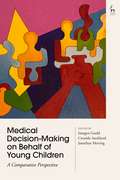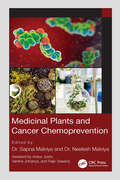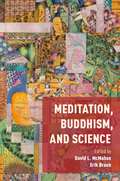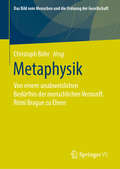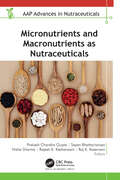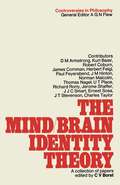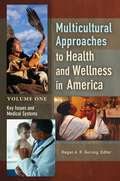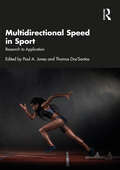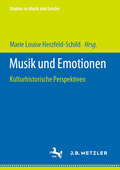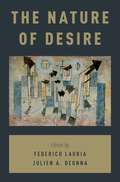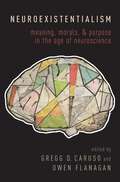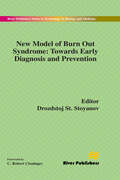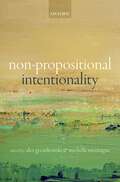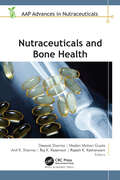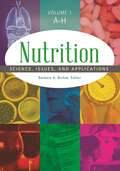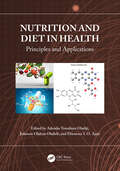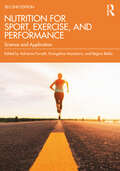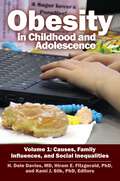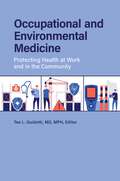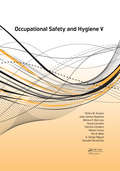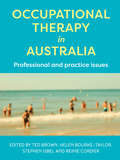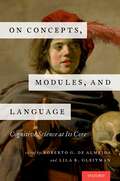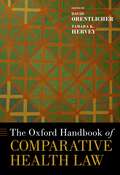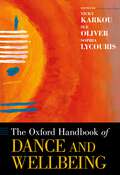- Table View
- List View
Medical Decision-Making on Behalf of Young Children: A Comparative Perspective
In the wake of the Charlie Gard and Alfie Evans cases, a wide-ranging international conversation was started regarding alternative thresholds for intervention and the different balances that can be made in weighing up the rights and interests of the child, the parent's rights and responsibilities and the role of medical professionals and the courts. This collection provides a comparative perspective on these issues by bringing together analysis from a range of jurisdictions across Europe, North and South America, Africa and Asia. Contextualising the differences and similarities, and drawing out the cultural and social values that inform the approach in different countries, this volume is highly valuable to scholars across jurisdictions, not only to inform their own local debate on how best to navigate such cases, but also to foster inter-jurisdictional debate on the issues. The book brings together commentators from the fields of law, medical ethics, and clinical medicine across the world, actively drawing on the view from the clinic as well as philosophical, legal and sociological perspectives on the crucial question of who should decide about the fate of a child suffering from a serious illness. In doing so, the collection offers comprehensive treatment of the key questions around whether the current best interests approach is still appropriate, and if not, what the alternatives are. It engages head-on with the concerns seen in both the academic and popular literature that there is a need to reconsider the orthodoxy in this area.
Medicinal Plants and Cancer Chemoprevention
Cancer is the second leading cause of death globally. Medicinal Plants and Cancer Chemoprevention provides information on the use of various herbal plants used as anticancer agents. It discusses the traditional system of medicine and focuses on plant-derived compounds for cancer therapy with integrated approaches. Chapters present information on various medicinal plants that covers background and history, ethnomedical considerations, morphology, phytochemistry, and pharmacological properties. The book presents a scientific investigation on medicinal plants in managing cancer, reported mechanisms of action as anticancer activity, as well as covering the toxicological aspects of certain plants. KEY FEATURES: · Details information on plant-derived compounds for cancer therapy. · Features information on methods of extraction and isolation of various phytoconstituents responsible for anticancer activity. · Discusses herbal formulations and alternative approaches used for the management and treatment of cancer. · Demonstrates the importance of alternative approaches including yoga, acupuncture, and dietary supplements to be effective in the management of cancer. This book is helpful to botanists, researchers and practitioners in alternative and complementary medicine, and the herbal medicine research community.
Meditation, Buddhism, and Science
The scientific study of Buddhist forms of meditation has surged in recent years, capturing the popular imagination and reshaping conceptions of what meditation is and what it can do. For perhaps the first time in history, meditation has shifted from Buddhist monasteries and practice centers to some of the most prominent and powerful modern institutions in the world, as well as non-institutional settings. As their contexts change, so do the practices-sometimes drastically. New ways of thinking about meditation are emerging as it moves toward more secular settings, ways that profoundly affect millions of lives all over the world. To understand these changes and their effects, the essays in this volume explore the unaddressed complexities in the interrelations between Buddhist history and thought and the scientific study of meditation. The contributors bring philosophical, cultural, historical, and ethnographic perspectives to bear, considering such issues as the philosophical presuppositions behind practice, the secularization of meditation, the values and goods assumed in clinical approaches, and the sorts of subjects that take shape under the influence of these transformed and transformative practices-all the more powerful for being so often formulated with the authority of scientific discourse.
Metaphysik: Von einem unabweislichen Bedürfnis der menschlichen Vernunft. Rémi Brague zu Ehren (Das Bild vom Menschen und die Ordnung der Gesellschaft)
Ein Leben lang leidet der Mensch an der nie zu überwindenden Endlichkeit seiner Vernunft, die ihn heftig mit Fragen bedrängt, zu deren Beantwortung sie selbst gar nicht in der Lage ist. Im Blick auf den Versuch, dieses Paradoxon aufzulösen, dass nämlich einerseits das metaphysische Bedürfnis der Vernunft zwar von dieser nicht aus eigener Kraft zufriedengestellt werden kann, andererseits aber diese Einsicht keineswegs ihr bohrendes Fragen zum Schweigen bringt, wird die Verführung nachvollziehbar, das Kind mit dem Bade auszuschütten und der Vernunft rundweg und grundsätzlich eine tragfähige lebens- und handlungsleitende Kraft abzusprechen. Große Teile der Postmoderne sind von diesem tiefen Misstrauen, das den Abschied von aller Vernunft zu rechtfertigen scheint, geprägt. Die Alternative zu ihrer Verabschiedung im Aufweis der Möglichkeit – ja Notwendigkeit – von Metaphysik auch und gerade angesichts einer stets in ihrer Endlichkeit gefangenen Vernunft wird in diesem Buch gezeichnet.
Micronutrients and Macronutrients as Nutraceuticals (AAP Advances in Nutraceuticals)
This new volume explains in detail the properties of micronutrients and macronutrients and their diverse uses as nutraceuticals for their beneficial properties, such as their antioxidant activity and immunity-boosting properties and how they can be incorporated into the human diet for optimum health, for growing beneficial bacteria in the gut, and inhibition of pathogens. Interestingly, the authors look at how disease-promoting habits often unfold in childhood, even prenatally, and employing nutrigenomics early on goes a long way toward curbing these chronic diseases later on in life. With the advent of increasing drug costs and escalating antimicrobial resistance, the pharmacological and antibiotic-like effects of naturally derived nutraceuticals are worth exploring. This volume provides important information toward that goal that will be valuable for researchers, faculty, and graduate students in medical microbiology, pharmacy, chemical engineering, and medical informatics.
Multicultural Approaches to Health and Wellness in America [2 volumes]: [2 volumes]
Led by a UCLA-trained health psychologist, a team of experts describes non-traditional treatments that are quickly becoming more common in Western society, documenting cultural variations in health and sickness practices to underscore the diversity among human society.This unique two-volume set describes the variety of cultural approaches to health practiced by people of varying cultural heritages and places them in stark context with traditional Western approaches to health care and medicine. Examining health practices such as Ayurveda, an ancient system of medicine that focuses on the body, the sense organs, the mind, and the soul; and traditional Chinese medicine (TCM), the author examines why these different approaches can explain some of the cultural variations in health behaviors, differences in why people get sick, and how they cope with illness. Traditional health care providers of all kinds—including clinicians, counselors, doctors, nurses, and social workers—will all greatly benefit by learning about vastly different approaches to health, while general readers and scholars alike will gain insight into the rich diversity of world culture and find the material fascinating.
Multidirectional Speed in Sport: Research to Application
During field- and court-based sports, players are continually required to perceive their environment within a match and select and perform the most appropriate action to achieve their immediate goal within that match instance. This ability is commonly known as agility, considered a vital quality in such sports and may incorporate a variety of locomotion and instantaneous actions. Multidirectional speed is a global term to describe the competency and capacity to perform such actions: accelerate, decelerate, change direction, and ultimately maintain speed in multiple directions and movements within the context of sports-specific scenarios, encompassing agility, speed, and many other related qualities. Multidirectional speed in sport depends on a multitude of factors, including perceptual-cognitive abilities, physical qualities, and the technical ability to perform the previously mentioned actions. Multidirectional Speed in Sport: Research to Application reviews the science of multidirectional speed and translates this information into real-world application in order to provide a resource for practitioners to develop multidirectional speed with athletes, bringing together knowledge from a wealth of world-leading researchers and applied practitioners in the area of speed and agility to provide a complete resource to assist practitioners in designing effective multidirectional speed development programmes. This text is critical reading for undergraduate and graduate sports science students, all individuals involved in training athletes (e.g. coaches, physiotherapists, athletic trainers), and researchers in the field of sports science and sports medicine.
Musik und Emotionen: Kulturhistorische Perspektiven (Studien zu Musik und Gender)
Musik und Emotionen haben Konjunktur, und zwar nicht erst seit Emotionen in Wissenschaft, Ratgeberliteratur und Journalismus zu einem der Hauptthemen geworden sind. Die Verbindung zwischen diesen beiden ephemeren Phänomenen geht bis in die Antike zurück, und sie ist weit komplexer als es die weitläufig bekannte Formulierung, Musik sei die Sprache der Gefühle, erahnen lässt. Im vorliegenden Band werden zum ersten Mal Herangehensweisen aus der Historischen Musikwissenschaft, der Tanzwissenschaft und den Sound Studies mit Ansätzen aus der Emotionsgeschichte verbunden, um den vielschichtigen Zusammenhang zwischen Musik und Emotionen aus einer kulturhistorischen Perspektive zu beschreiben.
The Nature of Desire
Desires matter. What are desires? Many believe that desire is a motivational state: desiring is being disposed to act. This conception aligns with the functionalist approach to desire and the standard account of desire's role in explaining action. According to a second influential approach, however, desire is first and foremost an evaluation: desiring is representing something as good. After all, we seem to desire things under the guise of the good. Which understanding of desire is more accurate? Is the guise of the good even right to assume? Should we adopt an alternative picture that emphasizes desire's deontic nature? What do neuroscientific studies suggest? Essays in the first section of the volume are devoted to these questions, and to the puzzle of desire's essence. In the second part of the volume, essays investigate some implications that the various conceptions of desire have on a number of fundamental issues. For example, why are inconsistent desires problematic? What is desire's role in practical deliberation? How do we know what we want? This volume will contribute to the emergence of a fruitful debate on a neglected, albeit crucial, dimension of the mind.
Neuroexistentialism: Meaning, Morals, and Purpose in the Age of Neuroscience
Existentialisms arise when the foundations of being, such as meaning, morals, and purpose come under assault. In the first-wave of existentialism, writings typified by Kierkegaard, Dostoevsky, and Nietzsche concerned the increasingly apparent inability of religion, and religious tradition, to support a foundation of being. Second-wave existentialism, personified philosophically by Sartre, Camus, and de Beauvoir, developed in response to similar realizations about the overly optimistic Enlightenment vision of reason and the common good. The third-wave of existentialism, a new existentialism, developed in response to advances in the neurosciences that threaten the last vestiges of an immaterial soul or self. Given the increasing explanatory and therapeutic power of neuroscience, the mind no longer stands apart from the world to serve as a foundation of meaning. This produces foundational anxiety. In Neuroexistentialism, a group of contributors that includes some of the world's leading philosophers, neuroscientists, cognitive scientists, and legal scholars, explores the anxiety caused by third-wave existentialism and possible responses to it. Together, these essays tackle our neuroexistentialist predicament, and explore what the mind sciences can tell us about morality, love, emotion, autonomy, consciousness, selfhood, free will, moral responsibility, law, the nature of criminal punishment, meaning in life, and purpose.
New Model of Burn Out Syndrome: Towards Early Diagnosis and Prevention
This book is based on our most recent investigations revealing the complexity of the determinants of burn out in different populations at risk (health care professions, teachers, social workers etc.). Based on our empirical study we have developed a model of vulnerability to burn out which explains it as a specific complementary interaction between certain personality profile and the psychological climate at work place. In the course of evaluation there have been employed different inventories which are now validated as an assessment battery in about 300 subjects. Temperament and Character Inventory (revised) has been exclusively standardized for Bulgarian population as well Although burn out syndrome (BOS) is thoroughly discussed in modern literature, the present proposal is unique in the following aspects:It emphasizes the role of personality profiling understood as complementary construct to the dimensional measures of psychological climate. In this way the authors challenge traditional views of BOS as systematic phenomenonThis book aims at establishment of the vulnerability to BOS (proneness) as well as to revealing of the protective factors and therefore to underpin early diagnosis and prevention programs.Our book brings together several perspectives: the clinical (psychological and psychopathological) with the management perspective. In this way it is most suitable for both general and specialized audience, including health care managers and mental health professionals, such as trainees in psychiatryThis book consist of entirely original investigation of BOS in specific populations at risk with novel battery of assessment tools
Nietzsche on Mind and Nature
This volume presents new essays exploring important aspects of Nietzsche's philosophy in connection with two major themes: mind and nature. A team of leading experts address questions including: What is Nietzsche's conception of mind? How does mind relate with the (rest of) nature? And what is Nietzsche's conception of nature? They all express the thought that Nietzsche's views on these matters are of great philosophical value, either because those views are consonant with contemporary thinking to a greater or lesser extent or because they represent a rich alternative to contemporary attitudes. The essays engage with Nietzsche's metaphysics; his philosophy of mind in light of contemporary views; the question of panpsychism in Beyond Good and Evil 36; the rejection of dualism in favour of monism (in particular a monism of value); Nietzsche's positions on consciousness and embodied cognition in light of recent cognitive science; a conception of freedom and agency based on an intrinsically motivating; embodied sense of self-efficacy; a Nietzschean account of valuing understood as drive-induced affective orientations of which an agent approves; the idea of ressentiment conceived as a process of intentional, not reflectively strategic, self-deception about one's own conscious mental states; and a defence of a Nietzschean naturalism.
Non-Propositional Intentionality
The mind is directed upon the world. There are worldly things that we have beliefs about and things in the world we desire to have happen. We find some things fearsome and others likable. The puzzle of intentionality — how it is that our minds make contact with the world — is one of the oldest and most vexed issues facing philosophers. Many contemporary philosophers and cognitive scientists have been attracted to the idea that our minds represent the world. This book explores an important assumption about representation, namely, that when we represent things in the world, we represent them as having properties, and in this way our representations have "propositional" structure. The contributors examine what the commitment to propositionalism amounts to; illuminate why one might find the thesis attractive (or unattractive); and consider ways in which one might depart from propositionalism. The hope is that this will lead towards a more complete understanding of how the mind and world are connected.
Nutraceuticals and Bone Health (AAP Advances in Nutraceuticals)
Here is an informative volume on the importance of nutraceuticals and herbal remedies for bone health. It explains the probable mechanisms of nutraceuticals for the prevention, treatment, and management of bone-related diseases as well as their curable effects on bone injuries. The volume covers the progression and development of bones, which is a multifaceted process that requires an endless and ample supply of nutrients, such as calcium, phosphorus, potassium, protein, vitamin D, magnesium, and fluoride. The book delves into the beneficial effects of nutraceuticals on overall bone health and for the treatment of bone disorders such as osteoporosis, bone fractures, scoliosis and related complications, rheumatoid arthritis, Paget’s disease, bursitis, gout, and carpal tunnel syndrome. It also addresses the use of nutraceuticals for inflammatory deformities and rickets.
Nutrition [2 volumes]: Science, Issues, and Applications [2 volumes]
This thorough one-stop resource draws on solid science and the latest research to play a dual educational role—providing background for students while answering general readers' questions about a wide range of nutrition-related topics.Nutrition is a popular but often misunderstood topic, one about which there is a great deal of interest as evidenced by the plethora of available advice. Because nutrition is a key factor in health, it is important that the public have a source of information they can trust. This is that source: a comprehensive overview that will help readers make sense of conflicting information they find in the media regarding what is healthy and what is not. Organized alphabetically, the two-volume work covers the most important topics in human nutrition including nutrients, nutrition-related health concerns, aging and nutrition, eating disorders, and the value of dietary supplements. The digestive system and its organs are discussed, with particular attention to health issues such as irritable bowel syndrome and the role of helpful bacteria. The physiology of hunger and the psychology of appetite and eating behaviors are explained. The work also delves into data on foods that have been featured in recent research, such as garlic, ginger, and turmeric, and it offers consumers a clearer understanding of nutrition-related practices such as organic farming, genetically modified foods, and the use of food additives.
Nutrition and Diet in Health: Principles and Applications
Nutrition and diet play a crucial role in sustaining good health throughout human lives. Food provides us with essential nutrients involved in many physiological activities and biological processes in the body including growth and development, metabolism, immune function, and overall well-being. Nutrition and Diet in Health: Principles and Applications reviews and discusses the issues related to the roles of nutrition and diet in human health and diseases.The book contains two sections – one section features principles, the other, covers applications. Part I provides information on sustainable use of nutrition and diets in health and diseases; advanced biotechnological approaches to improve nutritional content of food; trace elements in nutrition; drug and nutrient interactions; functional foods and nutraceuticals in health maintenance; and biomarkers of functional foods and nutraceuticals in health maintenance. Part II discusses the significance of nutrition in selected human diseases, including cardiovascular diseases, cancer, infection, neurodegenerative diseases, and metabolic co-morbidities. It also discusses optimal nutrition for wellness, fitness, pregnancy, mental health, aging, and longevity.Features Molecular and cellular-based research findings on the principles and applications of nutrition and diet in health Roles of nutritional agents in the pathogenesis of human diseases Underlying mechanisms that govern activities and strategies to prevent pathological conditions using nutritional agents Nutrition and Diet in Health: Principles and Applications is suitable for academia and scientists, enhances knowledge of students in healthcare and areas of biological sciences.
Nutrition for Sport, Exercise, and Performance: Science and Application
Nutrition for Sport, Exercise, and Performance offers a clear, practical, and accessible guide to building a comprehensive understanding of sport and exercise nutrition from leading experts in nutrition and exercise science. Nutrition before, during, and after training or a sporting event can improve the comfort, energy, and performance of athletes of all levels, from elite to recreational, as well as providing long-term health benefits. As such, nutrition is a key element of an athlete’s health and performance strategy, whether competing recreationally or at an elite level.Split into three parts, this new and revised edition of Nutrition for Sport, Exercise, and Performance provides an evidence-based introduction to nutrition for sport, exercise, and performance. Part I focusses on nutrition and sport science by explaining key principles underpinning sports nutrition science, including energy systems, exercise physiology and metabolism, and the digestion and absorption of macronutrients and micronutrients essential for performance and discusses factors influencing dietary intake, energy availability, and the process of dietary assessment. Part II is focussed on nutrition for exercise, pre- and post-training, hydration, supplements, and body composition measurement and modification. The final part (Part III) focusses on applied sports nutrition for a range of sports and athletes. This second edition delivers new insights into working with female athletes, occupational athletes, and athletes in contemporary sports including sport climbing, surfing, skateboarding, and breaking.Featuring contributions from a range of sport and exercise nutrition professionals with practical sports nutrition strategies and the latest evidence and practice guidelines, this is a core reference for undergraduate students, sports professionals, and aspiring athletes alike.
Obesity in Childhood and Adolescence [2 volumes]: [2 volumes] (Child Psychology and Mental Health)
This updated edition of the groundbreaking first edition identifies changes in U.S. children and adolescents' obesity levels within the past decade, examining factors contributing to obesity in this younger generation as well as possible solutions.This comprehensive review of obesity in childhood and adolescence describes the many factors that contribute to obesity, how to prevent it, and how to manage it in those who already experience its effects. Written by specialists in biological, psychological, social, and behavioral fields, these volumes take an interdisciplinary approach to the subject, offering readers a broad understanding of the systemic complexity of obesity from a public health perspective. The public must be aware of the deep and extensive roots of the problem in order to make informed decisions about policies related to school and nutritional practices, health care costs, and more. Factors contributing to obesity in children and adolescents range from obvious ones such as quantity of food consumed and amount of physical exercise undertaken to how friendly the neighborhood environment is for outdoor activities and the affordability of nutritional foods such as fruits and vegetables. With the information in these volumes, readers will feel empowered to help their clients, families, and communities.
Occupational and Environmental Medicine: Protecting Health at Work and in the Community
Providing a concise introduction to the field of occupational and environmental medicine, this book delves into what it does, how it protects workers, how it benefits employers, and how it is developing as an important field in health protection.This book shines a light on an important but little-appreciated corner of medicine where health, technology, the environment, and the economy come together to have a real impact on people and society. The text serves as one of the few entry points into the world of occupational and environmental health protection for readers interested in learning more about it and what it can do for them.Readers will be introduced to such topics as the history of occupational and environmental medicine (OEM), schools of thought associated with OEM, the relationship of OEM to neighboring fields of study, and profiles of OEM practitioners. This guide emphasizes the rich potential for environmental medicine to contribute to sustainability, public health, and community health protection, making it an essential resource for anyone interested or involved in these sectors.
Occupational Safety and Hygiene V: Selected papers from the International Symposium on Occupational Safety and Hygiene (SHO 2017), April 10-11, 2017, Guimarães, Portugal
Occupational Safety and Hygiene V contains selected contributions from the International Symposium on Occupational Safety and Hygiene (SHO 2017, 10-11 April 2017, Guimarães, Portugal). The contributions focus on a wide range of topics, including: - occupational safety- risk assessment- safety management- ergonomics- management systems- environmental ergonomics- physical environments- construction safety, and- human factors Occupational Safety and Hygiene V is mainly based on research carried out at universities and other research institutions, but also includes practical studies developed by OHS Practitioners within companies. Accordingly, this book will be a helpful text to get acquainted with the state-of-the-art in research in these domains, as well as with some practical tools and approaches that are currently used by OHS professionals worldwide.
Occupational Therapy in Australia: Professional and practice issues
This ground-breaking text provides a comprehensive guide to occupational therapy in Australia, from its role in the healthcare system to the scope and nature of its practice. The authors begin with an overview of the history of occupational therapy in Australia, the ethical and legal aspects of its practice and its role in population health and health promotion. The values and philosophy of occupational therapy are considered next, together with the roles and responsibilities of practitioners and specific practice features, including client-centred practice, evidence-based practice, research in occupational therapy and clinical reasoning. Key issues, including occupational analysis, the development of occupations across the lifespan, occupational therapy assessment, Indigenous issues, practice in rural and remote areas and advocacy, leadership and entrepreneurship, are also examined in detail.The first text specifically written for Australian entry-to-practice students by Australian authors, this book is destined to become an essential reference for both students and professionals in the field.'Truly a valuable resource for all Australian occupational therapy students and practitioners.'Professor Jenny Ziviani, Children's Allied Health Research, The University of Queensland'This is a text that will have many editions and document the evolution of the profession for decades to come.'Professor Carolyn M. Baum, School of Medicine, Washington University in St. Louis
On Concepts, Modules, and Language: Cognitive Science at Its Core
What are the landmarks of the cognitive revolution? What are the core topics of modern cognitive science? Where is cognitive science heading? These and other questions are addressed in this volume by leading cognitive scientists as they examine the work of one of cognitive science's most influential and polemical figures: Jerry Fodor. Contributions by Noam Chomsky, Tom Bever, Merrill Garrett, Massimo Piattelli-Palmarini, Zenon Pylyshyn, Janet Fodor, C. Randy Gallistel, Ernie Lepore, Mary C. Potter, Lila R. Gleitman, and others, put in perspective Fodor's contribution to cognitive science by focusing on three main themes: the nature of concepts, the modularity of language and vision, and the language of thought. On Modules, Concepts, and Language: Cognitive Science at Its Core is a one-of-a-kind series of essays on cognitive science and on Fodor. In this volume, Chomsky contrasts, for the first time, his view of modularity with that of Fodor's; Bever--one of the pioneers of modern psycholinguistics--discusses the nature of consciousness in particular with respect to language perception; Garrett--another of the pioneers of psycholinguistics--reassesses his view of modularity in language production; Pylyshyn--one of the leading figures of the modern symbolic, computational view of the mind--presents his view of the connection between visual perception and conceptual attainment; Gallistel--one of the most prominent cognitive neuroscientists--presents a proposal on what the biological bases of the computational theory of mind might be. Massimo Piattelli-Palmarini discusses Fodor's views on conceptual nativism, stemming from the epic debate between Chomsky and Piaget, which Piattelli-Palmarini organized. These and many other key figures of cognitive science are brought together, for the first time, constituting the most up-to-date critical view of some of cognitive science's most polemical topics and its prospects as the science of the mind. This volume is aimed at students and advanced researchers in core areas of cognitive science and is bound to become one of the classics in the field.
The Oxford Handbook of Comparative Health Law (Oxford Handbooks)
The Oxford Handbook of Comparative Health Law addresses some of the most critical issues facing scholars, legislators, and judges today: how to protect against threats to public health that can quickly cross national borders, how to ensure access to affordable health care, and how to regulate the pharmaceutical industry, among many others. When matters of life and death literally hang in the balance, it is especially important for policymakers to get things right, and the making of policy can be greatly enhanced by learning from the successes and failures of approaches taken in other countries. Where there are "common challenges" in law and health, there is much to be gained from experiences elsewhere. Thus, for example, countries that suffered early from the COVID-19 pandemic provided valuable lessons about public health interventions for countries that were hit later. Accordingly, the Handbook considers key health law questions from a comparative perspective. In health law, common challenges are frequent. In addition to ones already mentioned, there are questions about addressing the social determinants of health (e.g., poverty and pollution), organizing health systems to optimize use of available resources, ensuring that physicians provide care of the highest quality, protecting patient privacy in a data-driven world, and properly balancing patient autonomy with the interest in preserving life when reproductive and end-of-life decisions are made. This Handbook's wide scope and comparative take on health law are particularly timely. Economic globalization has made it increasingly important for different countries to harmonize their legal rules. Students, practitioners, scholars, and policymakers need to understand how health laws vary across national boundaries and how reforms can ensure a convergence toward an optimal set of legal rules, or ensure that specific legal arrangements are needed in particular contexts. Indeed, comparative analysis has become essential for legal scholars, and The Oxford Handbook of Comparative Health Law is the only resource that provides such an analysis in health law.
The Oxford Handbook of Dance and Wellbeing (Oxford Handbooks)
In recent years, a growth in dance and wellbeing scholarship has resulted in new ways of thinking that place the body, movement, and dance in a central place with renewed significance for wellbeing. The Oxford Handbook of Dance and Wellbeing examines dance and related movement practices from the perspectives of neuroscience and health, community and education, and psychology and sociology to contribute towards an understanding of wellbeing, offer new insights into existing practices, and create a space where sufficient exchange is enabled. The handbook's research components include quantitative, qualitative, and arts-based research, covering diverse discourses, methodologies, and perspectives that add to the development of a complete picture of the topic. Throughout the handbook's wide-ranging chapters, the objective observations, felt experiences, and artistic explorations of practitioners interact with and are printed alongside academic chapters to establish an egalitarian and impactful exchange of ideas.
